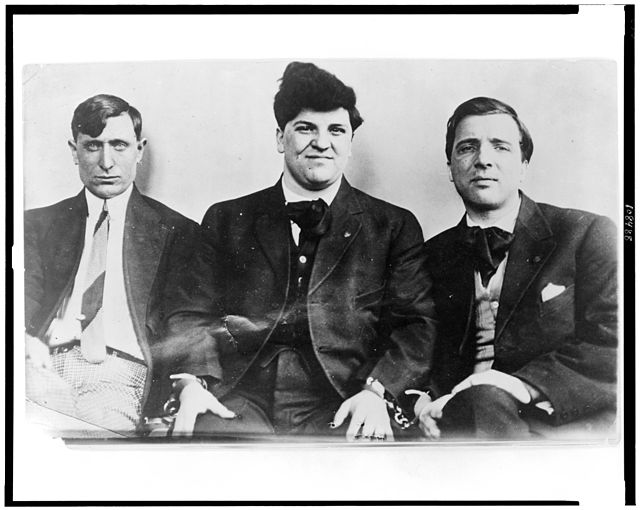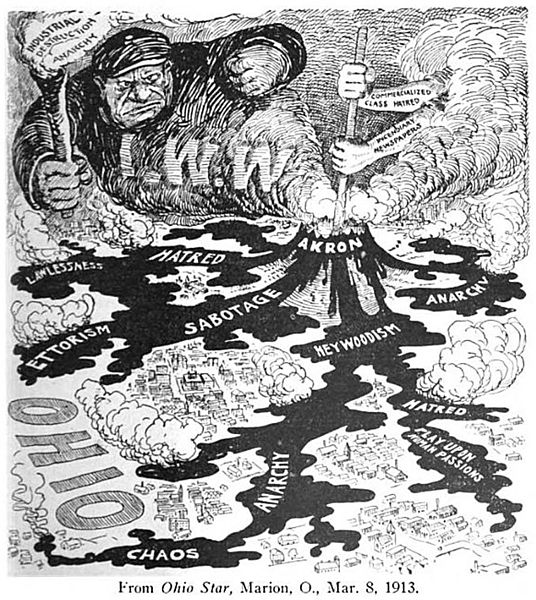Joseph James "Smiling Joe" Ettor (1885–1948) was an Italian-American trade union organizer who, in the middle-1910s, was one of the leading public faces of the Industrial Workers of the World. Ettor is best remembered as a defendant in a controversial trial related to a killing in the seminal Lawrence Textile Strike of 1912, in which he was acquitted of charges of having been an accessory.
J.J. Ettor (center), flanked by Joseph Caruso and Arturo Giovannitti, his co-defendants in the 1912 Lawrence trial
Employers feared "Ettorism". This 1913 anti-union cartoon from The American Employer depicts an IWW organizing drive as "a volcano of hate stirred into active eruption at Akron, by alien hands, which pour into the crater the disturbing acids and alkalis of greed, class hatred and anarchy. From the mouth of the pit rise poisonous clouds of suspicion, malice and envy to pollute the air, while from the cracked and breaking sides of the groaning mountain flow streams of lava of murder, anarchy and destruction, threatening to engulf in their path the fair cities and fertile farms of Ohio."
Joe Ettor addresses striking Brooklyn barbers in Union Square, New York City, May 17, 1913.
Italian Americans are Americans who have full or partial Italian ancestry. According to the Italian American Studies Association, the current population is about 18 million, an increase from 16 million in 2010, corresponding to about 5.4% of the total population of the United States. The largest concentrations of Italian Americans are in the urban Northeast and industrial Midwestern metropolitan areas, with significant communities also residing in many other major U.S. metropolitan areas.
Filippo Mazzei, Italian physician and promoter of liberty, whose phrase: "All men are by nature equally free and independent" was incorporated into the United States Declaration of Independence
Review of the Garibaldi Guard by President Lincoln
The "Bambinos" of Little Italy - Syracuse, New York in 1899
Mulberry Street, along which New York City's Little Italy is centered. Lower East Side, circa 1900.







